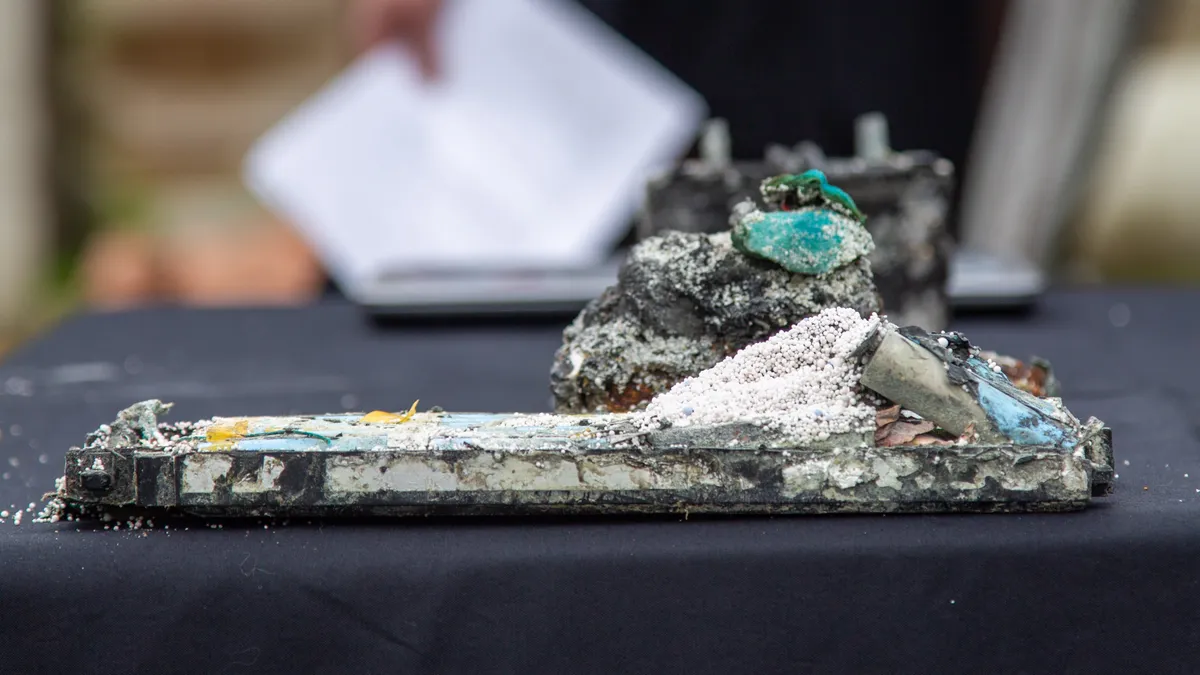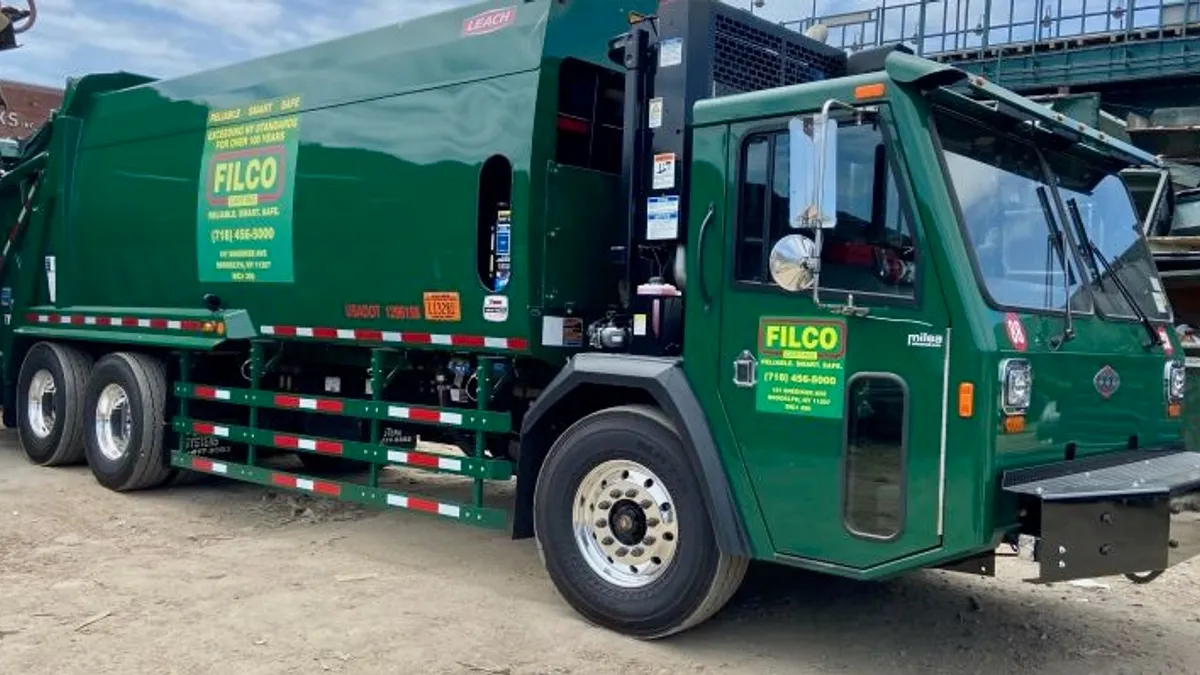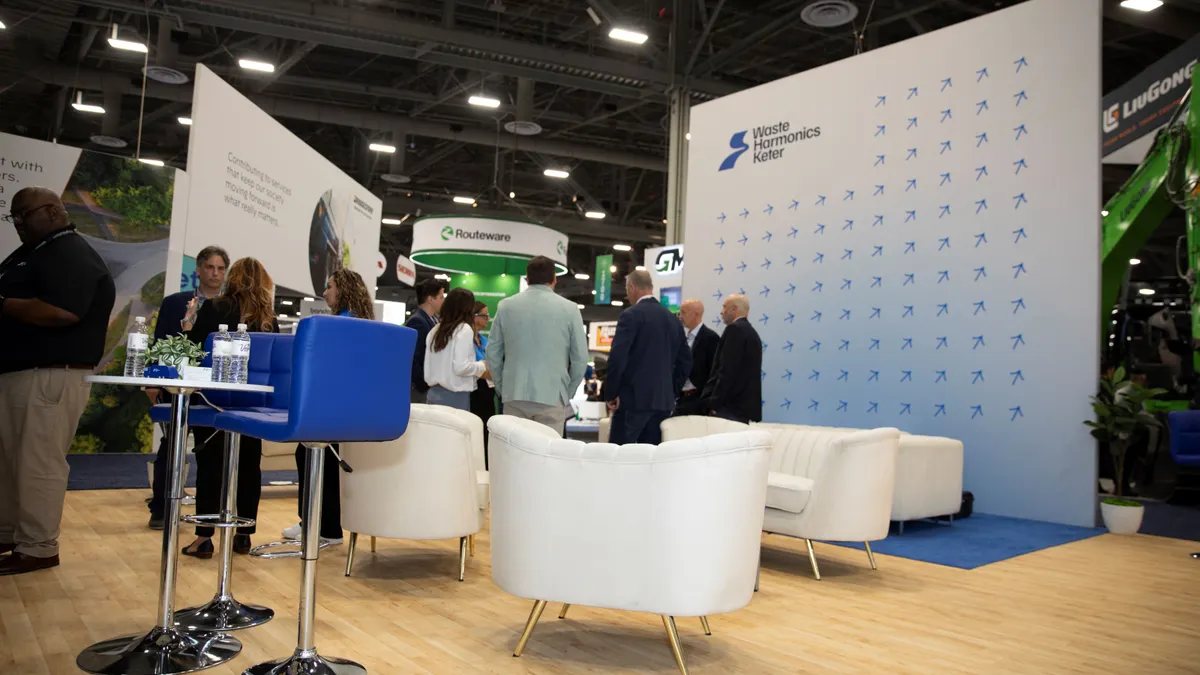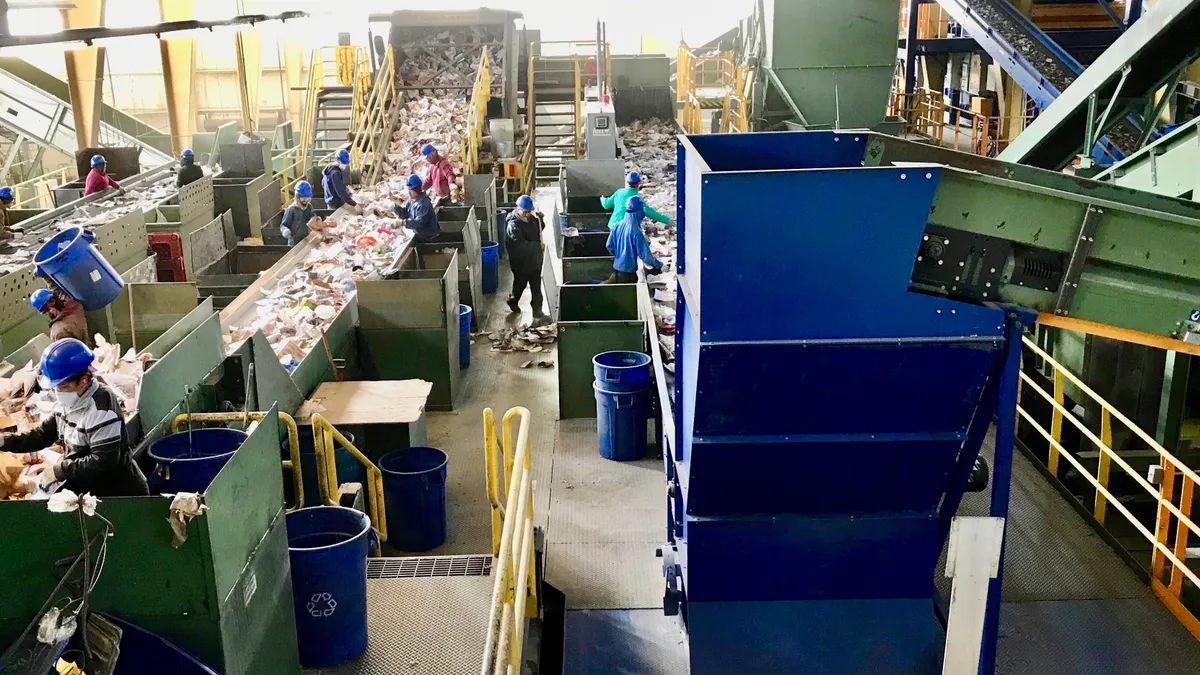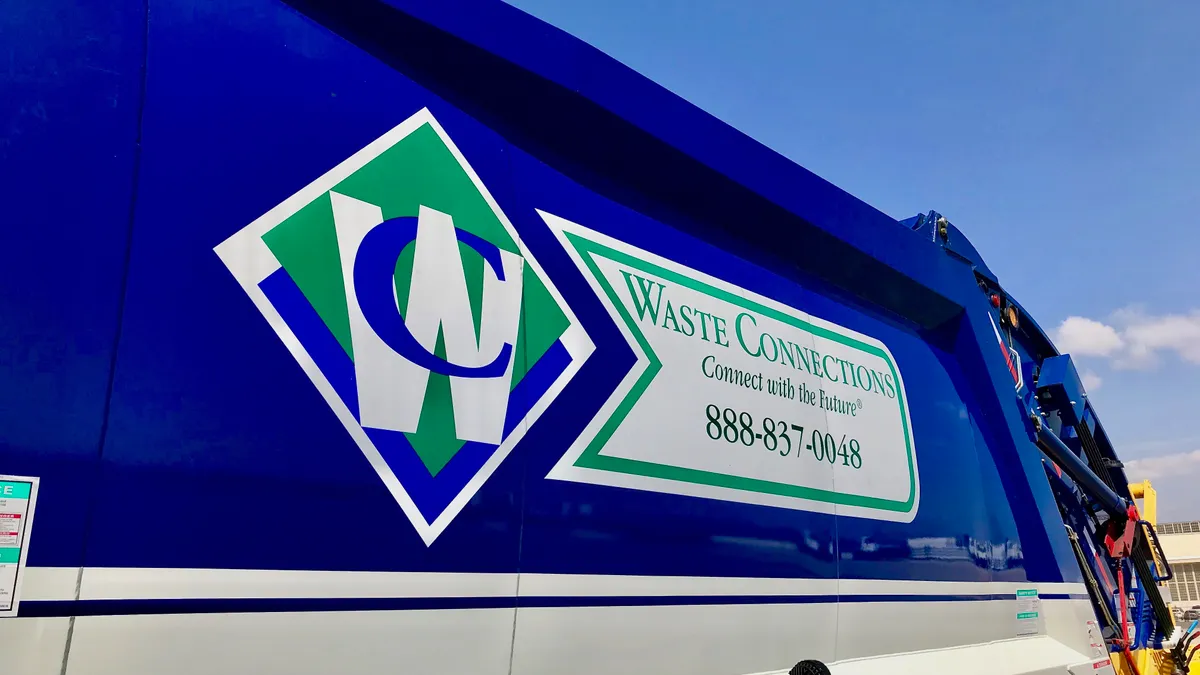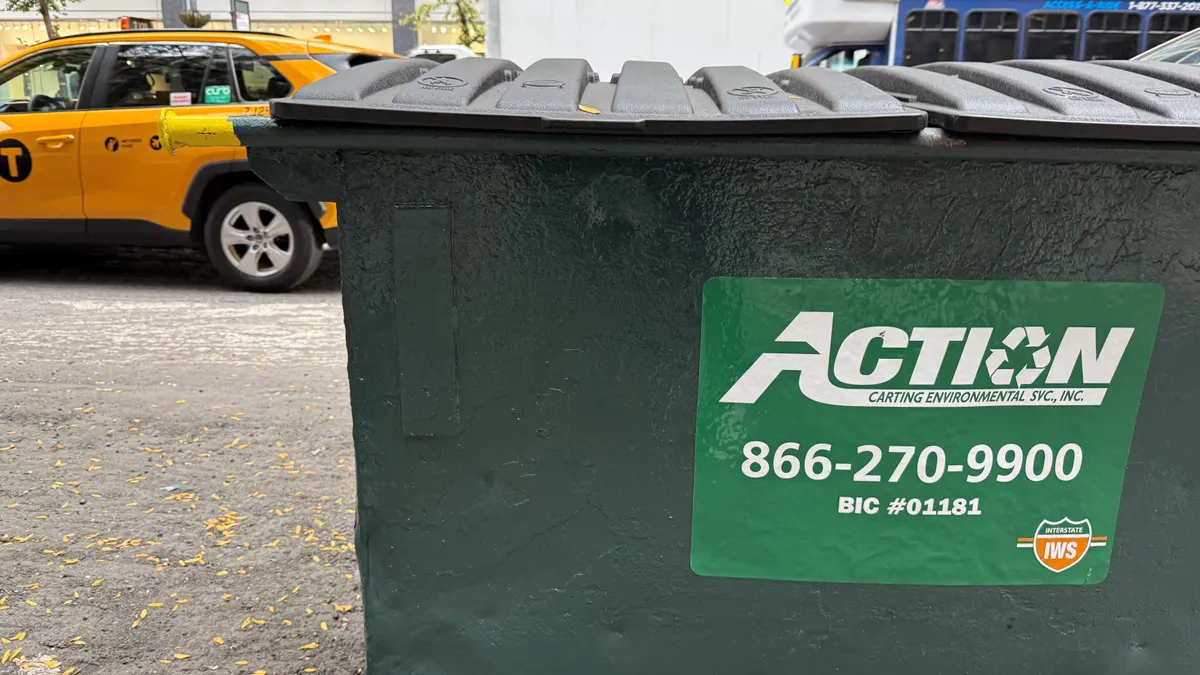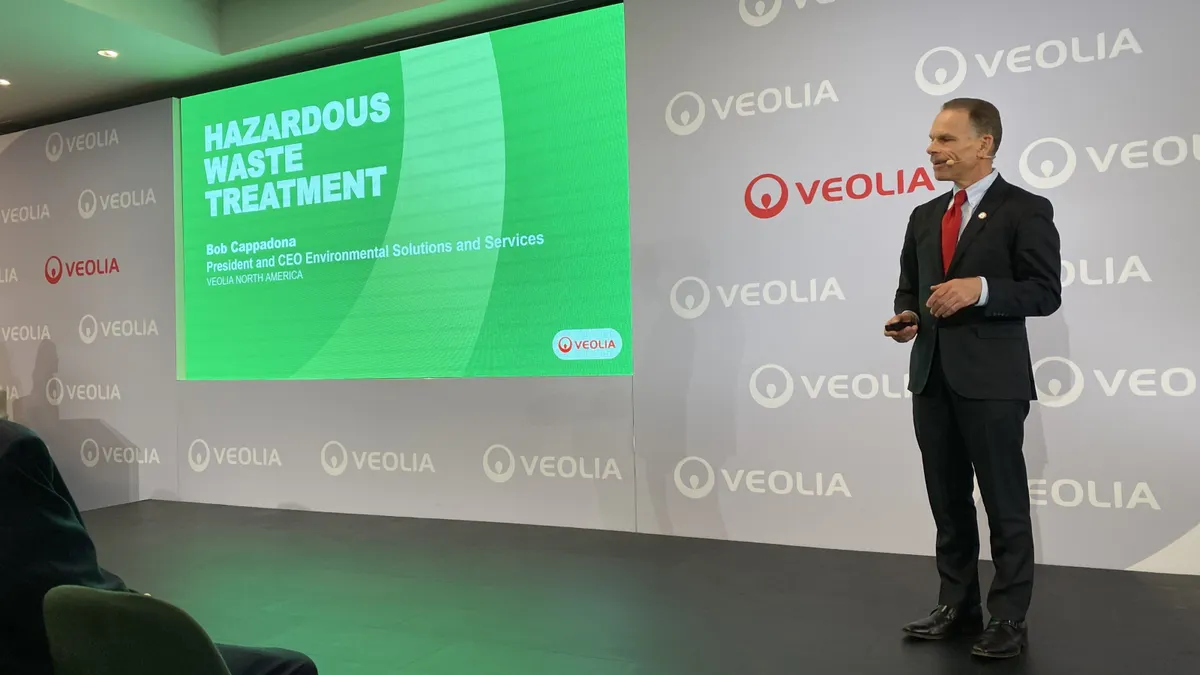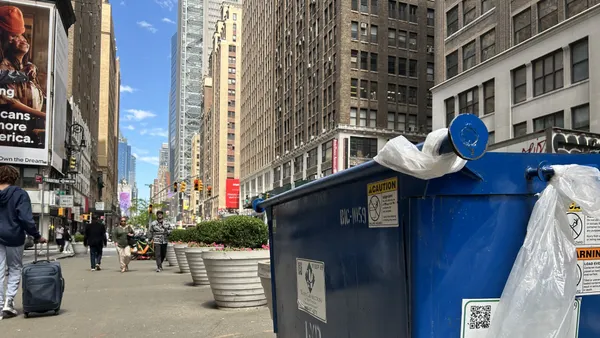The waste industry has long known that items such as lithium-ion batteries and compressed gas cylinders are causing major fires and injuries at facilities and in collection vehicles.
Getting outside players involved in the fight to prevent incidents — including manufacturers, lawmakers and the media — is a key way to stop them at the source, said speakers at a May 29 webinar hosted by the Solid Waste Association of North America and the National Stewardship Action Council.
Speakers called for the need for better product design and clearer labeling for products that commonly cause safety issues. Better end-of-life management for these products will also require the partnership and participation of manufacturers and lawmakers, they said.
Amy Lestition Burke, SWANA’s CEO and executive director, said more fires are happening in the industry due to the improper disposal of batteries, gas cylinders, vape pens, marine flares and other products that expose workers to risk of explosions.
“This is already a dangerous job. We don't want it to become even more deadly because of these items going in incorrect bins,” she said.
There’s no one-size-fits-all approach to preventing these incidents, but speakers said product bans, extended producer responsibility laws and better infrastructure and funding for community take-back programs can help. The messaging follows SWANA’s calls for “emergency coordination” with other industries to help enact long-term prevention efforts.
Here are some key takeaways from their discussion:
Offering safer product alternatives can save lives
Designing and manufacturing safer alternatives to hazardous products can help address root causes of waste industry injuries and explosions. Better-designed alternatives are less likely to pose a danger to workers if they accidentally enter waste streams, speakers said.
“If residents don't have a convenient and easy way to dispose of these items safely, they may use the easiest option: putting them in the trash,” Lestition Burke said. “That puts everyone at risk across the board.”
One option is to ban the sale of certain products. But simply banning a product won’t work unless consumers have an easy-to-access replacement, said Heidi Sanborn, executive director of NSAC.
For example, California banned the sale of certain mercury-containing fluorescent lightbulbs as of 2024. “In this case, LED [lightbulbs] were already on the market, and prices had come way down to be on par with fluorescent lighting,” she said.
California will also require one-pound propane cylinders sold in the state to be reusable and refillable starting Jan. 1, 2028. Refillable, reusable containers are already on the market for this purpose, Sanborn said. The phase-out is meant to stop the single-use containers from entering the waste stream, but also aims to reduce management costs. Yosemite National Park spends about $30,000 a year to manage empty gas cylinders left behind by park visitors, she said.
Making product drop-offs more convenient and reliable
Community drop-off events play an important role in diverting dangerous materials from MRFs, collection vehicles and disposal sites, speakers said. These events tend to be popular in communities where the public is well-informed about their drop-off options and understand that putting these items in their household trash can be dangerous.
To pull off a successful drop-off event or program, municipalities often shoulder the costs, meaning they might not be able to offer the services very often or might limit what kinds of materials are eligible for drop-off, Lestition Burke said.
Municipalities may also find themselves in a difficult position if they collect an item they can’t find an end use for, she said. “And if they’re not able to find a safe way to manage it once they collect it, they might not offer that service in a community.”
SWANA and other organizations have called for producers and manufacturing groups to help establish and fund collection and disposal systems that can reliably collect and manage hazardous products properly.
Some recently passed EPR laws, including Nebraska’s newly passed EPR for batteries law, require producers to lead public education campaigns and establish collection points that are convenient to access.
Policy has power when paired with manufacturer buy-in
EPR programs aren’t the only policy solution, but they might be a good fit for managing materials that don’t have other feasible replacement alternatives, like California’s non-EPR lightbulb and gas cylinder laws, Sanborn said.
“If we want to drive markets, we have to ask a lot of different questions before we pick a policy tool, because running legislation is always the last ditch effort to address something,” she said.
Several states have successfully passed EPR laws for hazardous products such as paint, with each featuring varying categories. For example, California’s own EPR programs include sharps, pharmaceuticals, mercury thermostats, certain batteries and paint. Maine also has laws for mercury-containing thermostats, architectural paint and e-waste. Vermont has an EPR law for household hazardous waste.
Buy-in from stakeholders, including relevant product manufacturers, is critical for these programs to be a success, Sanborn said. Last year, California passed a stewardship program for marine flares, but Gov. Gavin Newsom vetoed the bill. Sanborn cited pushback from marine flare manufacturers as a roadblock to the legislation becoming law. That bill has been reintroduced this year.
Meanwhile, California’s proposed household hazardous waste EPR bill will not move forward this year, but Sanborn said it’s expected to be reintroduced in January as part of a two-year bill process.
Other state legislatures are currently working to pass stewardship legislation for materials that commonly cause problems in waste streams, such as New Jersey’s e-cigarette bill and a gas cylinder bill in New York, Sanborn said.
“The more we all coordinate, learn from each other, and push together, the better chance these bills will have,” she said.


